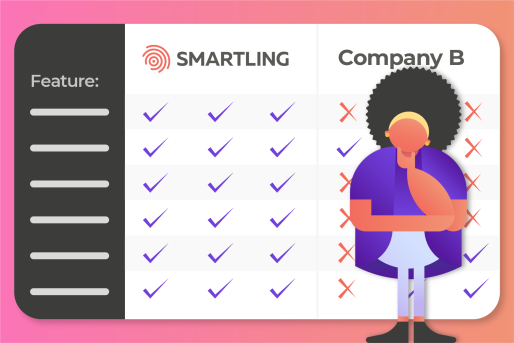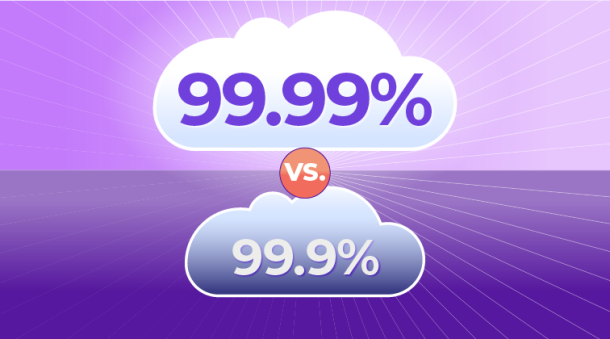5 Things to Know When Localizing a Drupal Website in 2022 from Smartling on Vimeo.
5 Things to Know When Localizing a Drupal Website in 2022
Translation and localization work on a site can be a breeze. Built right into Drupal’s translation management (TMGMT) framework, Smartling supports Drupal 7, 8, and 9. The TMGMT framework and Smartling integration drastically reduce the hours required to manage localization for global websites, ultimately putting you in new markets faster.
This session led by Smartling’s Product Manager Steven Sorenson and Solutions Architect Donovan Dwyer covers the top 5 things to know when you're localizing a Drupal website in 2022 and how you can start implementing them today.
TMGMT & Smartling
What is TMGMT?
TMGMT is a module inside the Drupal platform that provides multi-language functionality, allowing users to create, store, interact with, and export the translations and other actions necessary to facilitate an automated translation experience.
Users create their web content within Drupal, and then the content is connected to the Smartling platform for the high-scale translation process to be achieved using human translation, machine translation, or a mix of both.
TMGMT is a very powerful tool, as it enables the transition process in a Drupal environment in and of itself, providing the ability to have translators in the Drupal environment provide alternate versions of the source content in different languages. So, it's a very crucial first step in getting the Drupal website translated and fully ready for multilingual purposes.
Drupal & Smartling Job Systems
TMGMT creates jobs in your Drupal environment containing content to request translations, and the Smartling connector will use these jobs to create Smartling jobs. It will take a one-to-one copy of that TMGMT job and bring it into Smartling, where you can access all of the Smartling functionalities such as:
And this one-to-one relationship allows you to functionally use the Drupal environment as an extension of your Smartling environment and vice versa – facilitating the communication between two environments and enabling you to translate your Drupal environment seamlessly from within Drupal itself.
Setup
Module
The first thing in the setup process that's important to note is the installation of the modules, which are the Smartling modules related to translating your Drupal content. There are three modules in the installation process that are integral to the operation of the connector itself:
- TMGMT Module
- TMGMT Smartling Module
- TMGMT Extension Suit Module
These modules allow you to submit content for translation from your Drupal environment into your Smartling project and get those translations back into your Drupal environment.
But alongside these modules are also some core modules that Drupal comes installed with that are critical to the operation of the existing Smartling modules. Those core modules are:
- Language Module
- Locale Module
- Content Translation Module
- Config Translation Module
You would definitely need all four of these core modules enabled in order for the Smartling connector to fully operate as expected. That’s because these core modules are responsible for a lot of the UI elements in your Drupal environment that enable you to request content for translation and then see those translations in your environment.
Fields
Fields are where you determine what in your Drupal environment is in or out of scope for translation. This is an essential first step to take because this determines what actually will be translatable when you request the content for translation. Upon installing the necessary modules, you should go into the fields menu and check off any content types and content type fields that you wish to translate using the connector.
Once you have checked off these fields, they will be included in the submissions link to Smartling and be translated. Once you receive those contents back from Smartling, those fields will be replaced with the translated text.
Plugin Configuration Options
The Smartling connector comes with various customizable configuration options that will change the way the connector works.
- Auto-Publishing Option: By default, once you request content for translation from your Drupal environment, Smartling will translate it, send it back, and that Drupal job that initiated that process will automatically be approved and published on your CMS platform. You can also choose to disable the auto-publishing feature and manually approve the translations.
- Content Parsing Customization: A placeholder is a piece of defined content that will not be accessible for translators. If there is a particular word or item in a sentence that you don’t want to be altered, you can make them placeholders, which will prevent translators from changing it.
- Flexible Automated Scheduling: The Smartling connector uses Drupal's cron interface to decide when to run its necessary executions. At every interval of the scheduled time, Drupal will run its cron job, and the Smartling connector will perform three reactions:
- Push out any content that you've requested for translation from Drupal into your Smartling project.
- Pull in any completed translations in your Smartling project into your Drupal environment.
- Push out any requested items that you've submitted for translation in terms of context to your Smartling project.
- HTTP Callbacks for Instant Translation Delivery: The cron job is responsible for downloading your completed translations. If you incorporate in HTTP callback, your translated content will be delivered immediately once your translations are completed in Smartling. There is no need to wait for the cron job to run or manually process it. Using the callback lowers the number of items in the cron's queue, which leads to better performance.
Paragraphs
A paragraph is an optional module in the Drupal environment, which serves as a customizable container that comprises a template for content. It’s a specific pattern of content that you can reuse across your website as needed. So paragraphs are especially useful for developers who want to simplify the content creation process for their content authors.
Visual Context
Visual context allows the linguists performing the translation to see what the original context of the strings looks like.
When you get the content from Drupal, it's all in an XML file, and you have to parse through that and build strings. You don't have any context with those strings by default, so it would be difficult to understand.
So when somebody requests translation for a paragraph or a page inside of Drupal, you can upload a visual context, and it allows the linguists to see the original site and what it looks like before they start translating. The translation is rendered in a live format as they translate, so they can spot and address issues immediately.
Change Management
There is often constant modification of the source content – may be to keep up with generating new business or engaging new customers – which leads to needing new translations so that they are always in sync with the English message. However, when you’re translating a lot of content in many different languages, the change management can be cumbersome, especially if you’re doing it manually.
The automated change management allows you to auto-detect when content already sent for translation has been modified. You can choose to automatically send the modified content for translation into a new job however often you like, or you can have the detection turned on but choose not to allow it to be sent automatically to be translated. Instead, it can just notify you when it’s ready for translation, and you can decide when you want to send it off for translation.
Support for Drupal’s TMGMT and custom translation framework has never been simpler. Ready to integrate your Drupal websites with Smartling? Learn more about the integration or book a demo.






